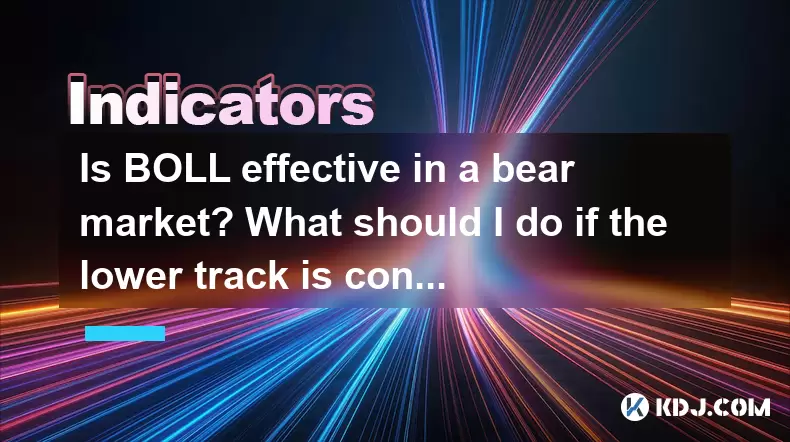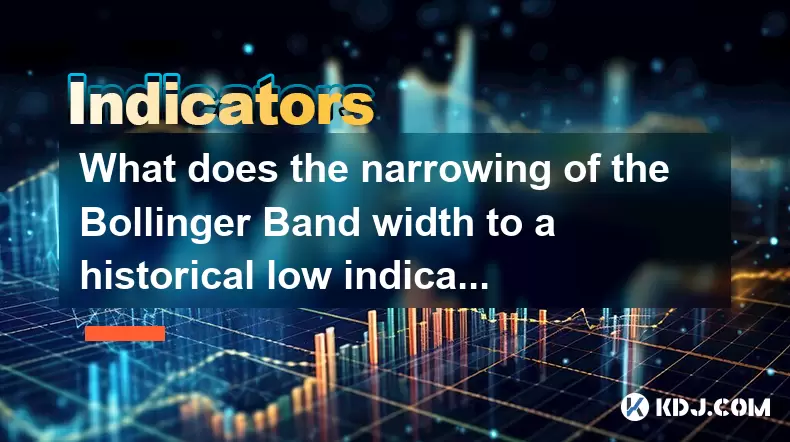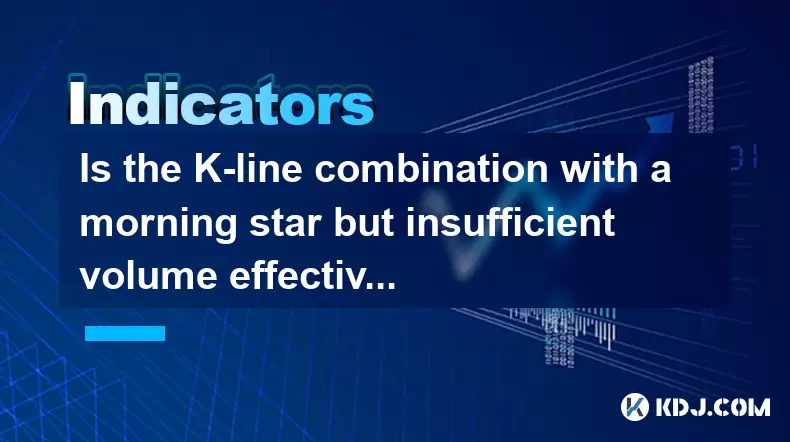-
 Bitcoin
Bitcoin $101,898.5005
-0.75% -
 Ethereum
Ethereum $2,258.1125
-1.07% -
 Tether USDt
Tether USDt $1.0004
0.01% -
 XRP
XRP $2.0178
-2.93% -
 BNB
BNB $624.0243
-1.53% -
 Solana
Solana $134.3298
-0.90% -
 USDC
USDC $0.9999
0.01% -
 TRON
TRON $0.2675
-2.05% -
 Dogecoin
Dogecoin $0.1538
-1.96% -
 Cardano
Cardano $0.5482
-1.11% -
 Hyperliquid
Hyperliquid $35.5636
5.45% -
 Bitcoin Cash
Bitcoin Cash $453.4902
-1.66% -
 Sui
Sui $2.5134
-2.97% -
 UNUS SED LEO
UNUS SED LEO $9.1292
1.77% -
 Chainlink
Chainlink $11.8457
-1.60% -
 Stellar
Stellar $0.2312
-2.73% -
 Avalanche
Avalanche $16.9721
0.29% -
 Toncoin
Toncoin $2.7549
-3.82% -
 Shiba Inu
Shiba Inu $0.0...01081
-1.10% -
 Litecoin
Litecoin $80.8250
-0.71% -
 Hedera
Hedera $0.1374
0.21% -
 Monero
Monero $305.4827
-2.36% -
 Ethena USDe
Ethena USDe $1.0006
0.00% -
 Dai
Dai $1.0000
-0.01% -
 Polkadot
Polkadot $3.2085
-3.12% -
 Bitget Token
Bitget Token $4.0845
-3.13% -
 Uniswap
Uniswap $6.3353
-1.63% -
 Pi
Pi $0.5085
-0.70% -
 Pepe
Pepe $0.0...08913
-3.82% -
 Aave
Aave $232.7090
-0.58%
Is BOLL effective in a bear market? What should I do if the lower track is constantly broken?
In a bear market, Bollinger Bands remain effective; traders should focus on the lower band and use stop-loss orders if it's constantly broken to minimize losses.
May 23, 2025 at 02:07 am

In the world of cryptocurrency trading, technical analysis tools are indispensable for traders seeking to navigate the volatile markets effectively. One such tool is the Bollinger Bands (BOLL), which are widely used to assess market volatility and potential price movements. The question of whether BOLL is effective in a bear market, and what actions to take if the lower track is constantly broken, are crucial for traders to understand. This article delves into these topics to provide a comprehensive guide.
Understanding Bollinger Bands in Cryptocurrency Trading
Bollinger Bands are a technical analysis tool developed by John Bollinger. They consist of a middle band, which is typically a simple moving average (SMA), and two outer bands that are standard deviations away from the middle band. The standard settings for Bollinger Bands are a 20-period SMA with the upper and lower bands set at two standard deviations from the SMA.
In the context of cryptocurrency trading, Bollinger Bands can help traders identify periods of high and low volatility. When the bands tighten, it suggests that the market is experiencing low volatility, and a significant price movement might be imminent. Conversely, when the bands widen, it indicates high volatility, and traders might expect the price to revert to the mean.
Effectiveness of Bollinger Bands in a Bear Market
A bear market is characterized by a sustained period of declining prices, often accompanied by increased volatility and uncertainty. The question arises: are Bollinger Bands effective in such conditions?
In a bear market, Bollinger Bands can still be effective, but their interpretation requires a nuanced approach. The lower band of the Bollinger Bands can act as a support level, where prices might find a temporary floor. However, during a prolonged bear market, this support level may be broken more frequently, leading to further declines.
Traders should be aware that in a bear market, the upper band may not act as a reliable resistance level. Instead, the focus should be on the lower band and the middle band, which can provide insights into potential rebounds or further declines.
What to Do When the Lower Track is Constantly Broken
If the lower track of the Bollinger Bands is constantly broken, it signals that the market is in a strong downtrend. This situation requires careful consideration and strategic action. Here are some steps that traders can take:
Reassess Your Position: If you are holding a long position, it might be time to consider exiting to minimize losses. The constant breaking of the lower track indicates that the market is not finding support at these levels, and further declines are likely.
Use Stop-Loss Orders: Implementing stop-loss orders can help protect your capital. Set a stop-loss just below the lower Bollinger Band to ensure that you exit the position if the price continues to fall.
Look for Oversold Conditions: In a bear market, prices can become oversold, which might present buying opportunities. Use other technical indicators, such as the Relative Strength Index (RSI), to identify when the market is oversold. If the RSI is below 30 and the price touches the lower Bollinger Band, it might be a signal to buy.
Consider Short Selling: If you are an experienced trader, you might consider short selling in a bear market. The constant breaking of the lower track can provide confirmation that the downtrend is strong, making it a potential opportunity for short positions.
Combining Bollinger Bands with Other Indicators
To enhance the effectiveness of Bollinger Bands in a bear market, traders can combine them with other technical indicators. Here are some useful combinations:
Bollinger Bands and RSI: As mentioned earlier, the RSI can help identify oversold conditions. When the RSI is below 30 and the price touches the lower Bollinger Band, it can be a strong buy signal.
Bollinger Bands and MACD: The Moving Average Convergence Divergence (MACD) can provide additional confirmation of trends. If the MACD line crosses below the signal line while the price is breaking the lower Bollinger Band, it reinforces the bearish signal.
Bollinger Bands and Volume: Volume can provide insights into the strength of price movements. If the price breaks the lower Bollinger Band with high volume, it indicates strong selling pressure, reinforcing the bearish trend.
Practical Example of Using Bollinger Bands in a Bear Market
To illustrate how Bollinger Bands can be used in a bear market, let's consider a hypothetical scenario involving Bitcoin (BTC). Suppose the cryptocurrency market is in a bear phase, and BTC's price is consistently breaking the lower Bollinger Band.
Step 1: Observe the Bollinger Bands on your trading chart. Notice that the bands are widening, indicating increased volatility.
Step 2: Check the RSI to see if it is below 30, indicating an oversold condition.
Step 3: If the RSI is below 30 and the price touches the lower Bollinger Band, consider it a potential buying opportunity. However, be cautious and set a tight stop-loss just below the lower band to manage risk.
Step 4: Monitor the price movement. If the price rebounds and moves back within the Bollinger Bands, it might confirm the buying signal. If the price continues to break the lower band, reassess your position and consider exiting.
Step 5: If you are considering short selling, wait for the price to break the lower Bollinger Band with high volume, and the MACD line to cross below the signal line. This can provide confirmation of a strong downtrend, making it a potential short-selling opportunity.
FAQs
Q1: Can Bollinger Bands predict market reversals in a bear market?
While Bollinger Bands can provide signals of potential market reversals, they are not foolproof predictors. In a bear market, the lower band might be broken more frequently, making it challenging to predict exact reversals. Traders should use Bollinger Bands in conjunction with other indicators to increase the accuracy of their predictions.
Q2: How often should I adjust the settings of Bollinger Bands in a bear market?
The standard settings of Bollinger Bands (20-period SMA and 2 standard deviations) are generally effective in most market conditions. However, in a bear market, you might consider adjusting the settings to be more responsive to the increased volatility. Experiment with shorter periods and different standard deviations to find what works best for your trading strategy.
Q3: Is it advisable to use Bollinger Bands as the sole indicator in a bear market?
No, it is not advisable to rely solely on Bollinger Bands in a bear market. The increased volatility and frequent breaking of the lower band can lead to false signals. Combining Bollinger Bands with other indicators, such as RSI, MACD, and volume analysis, can provide a more comprehensive view of the market and help you make more informed trading decisions.
Q4: Can Bollinger Bands be used for long-term investing in a bear market?
Bollinger Bands are primarily a short-term trading tool and are less effective for long-term investing. In a bear market, long-term investors might find more value in fundamental analysis and broader market trends. However, Bollinger Bands can still be used to identify potential entry and exit points for adjusting long-term positions based on short-term market movements.
Disclaimer:info@kdj.com
The information provided is not trading advice. kdj.com does not assume any responsibility for any investments made based on the information provided in this article. Cryptocurrencies are highly volatile and it is highly recommended that you invest with caution after thorough research!
If you believe that the content used on this website infringes your copyright, please contact us immediately (info@kdj.com) and we will delete it promptly.
- Crypto Penny Coins: Hunting for Monster Gains in 2025
- 2025-06-24 02:45:12
- Ethereum Whale Dips Into Crashing ETH: Smart Move?
- 2025-06-24 02:25:12
- Shiba Inu vs. Rival Tokens: Navigating the Cryptocurrency Craze in NYC
- 2025-06-24 03:10:22
- Stablecoin Scramble: Market Structure and Bill Passage in the Crypto Wild West
- 2025-06-24 02:45:12
- Circle Stock Soars: Surpassing USDC Market Cap After GENIUS Act Boost
- 2025-06-24 03:10:22
- Pepe Coin's Open Interest Hints at Potential Rally: A Trader's Guide
- 2025-06-24 02:50:12
Related knowledge

How to interpret that the time-sharing chart shows "volume and price rise together" but the MACD red column shortens?
Jun 24,2025 at 01:08am
Understanding the Concept of 'Volume and Price Rise Together'In cryptocurrency trading, when a time-sharing chart shows that both volume and price rise together, it is typically interpreted as a sign of strong buying pressure. This means more traders are entering long positions, pushing the price higher while increasing the trading volume. This phenomen...

Is it contradictory that the moving average system is arranged in a bullish pattern but the DMI shows a decline in trend strength?
Jun 23,2025 at 11:43pm
Understanding the Moving Average and DMI RelationshipIn cryptocurrency trading, technical analysis plays a crucial role in identifying potential trends and making informed decisions. Two of the most commonly used indicators are the Moving Average (MA) and the Directional Movement Index (DMI). While both tools aim to provide insight into market direction...

How to interpret that the Williams indicator quickly turns back in the overbought area but does not fall below the 50-axis?
Jun 24,2025 at 02:01am
Understanding the Williams %R Indicator in Cryptocurrency TradingThe Williams %R indicator, often referred to as Williams Percent Range, is a momentum oscillator used by traders to identify overbought or oversold conditions in financial markets, including cryptocurrency. It ranges from 0 to -100, where values above -20 are considered overbought and thos...

What is the significance of the gap formed by the gap opening not being filled within five days?
Jun 23,2025 at 09:42pm
Understanding Gaps in Cryptocurrency TradingIn the world of cryptocurrency trading, a gap refers to a situation where the price of an asset jumps from one level to another without any trading activity occurring between those two levels. This often happens over weekends or holidays when the market is closed, and significant news or events occur that impa...

What does the narrowing of the Bollinger Band width to a historical low indicate?
Jun 24,2025 at 02:35am
Understanding Bollinger Bands and Their Role in Technical AnalysisBollinger Bands, developed by John Bollinger in the 1980s, are a popular technical analysis tool used to measure market volatility. They consist of three lines: a simple moving average (SMA) in the center, typically over a 20-period setting, and two outer bands that are set at a standard ...

Is the K-line combination with a morning star but insufficient volume effective?
Jun 24,2025 at 02:49am
Understanding the Morning Star K-line PatternThe morning star is a classic candlestick pattern indicating a potential reversal from a downtrend to an uptrend. It consists of three candles: a large bearish candle, followed by a small-bodied candle (often a doji or spinning top), and then a large bullish candle that closes within the range of the first ca...

How to interpret that the time-sharing chart shows "volume and price rise together" but the MACD red column shortens?
Jun 24,2025 at 01:08am
Understanding the Concept of 'Volume and Price Rise Together'In cryptocurrency trading, when a time-sharing chart shows that both volume and price rise together, it is typically interpreted as a sign of strong buying pressure. This means more traders are entering long positions, pushing the price higher while increasing the trading volume. This phenomen...

Is it contradictory that the moving average system is arranged in a bullish pattern but the DMI shows a decline in trend strength?
Jun 23,2025 at 11:43pm
Understanding the Moving Average and DMI RelationshipIn cryptocurrency trading, technical analysis plays a crucial role in identifying potential trends and making informed decisions. Two of the most commonly used indicators are the Moving Average (MA) and the Directional Movement Index (DMI). While both tools aim to provide insight into market direction...

How to interpret that the Williams indicator quickly turns back in the overbought area but does not fall below the 50-axis?
Jun 24,2025 at 02:01am
Understanding the Williams %R Indicator in Cryptocurrency TradingThe Williams %R indicator, often referred to as Williams Percent Range, is a momentum oscillator used by traders to identify overbought or oversold conditions in financial markets, including cryptocurrency. It ranges from 0 to -100, where values above -20 are considered overbought and thos...

What is the significance of the gap formed by the gap opening not being filled within five days?
Jun 23,2025 at 09:42pm
Understanding Gaps in Cryptocurrency TradingIn the world of cryptocurrency trading, a gap refers to a situation where the price of an asset jumps from one level to another without any trading activity occurring between those two levels. This often happens over weekends or holidays when the market is closed, and significant news or events occur that impa...

What does the narrowing of the Bollinger Band width to a historical low indicate?
Jun 24,2025 at 02:35am
Understanding Bollinger Bands and Their Role in Technical AnalysisBollinger Bands, developed by John Bollinger in the 1980s, are a popular technical analysis tool used to measure market volatility. They consist of three lines: a simple moving average (SMA) in the center, typically over a 20-period setting, and two outer bands that are set at a standard ...

Is the K-line combination with a morning star but insufficient volume effective?
Jun 24,2025 at 02:49am
Understanding the Morning Star K-line PatternThe morning star is a classic candlestick pattern indicating a potential reversal from a downtrend to an uptrend. It consists of three candles: a large bearish candle, followed by a small-bodied candle (often a doji or spinning top), and then a large bullish candle that closes within the range of the first ca...
See all articles
























































































